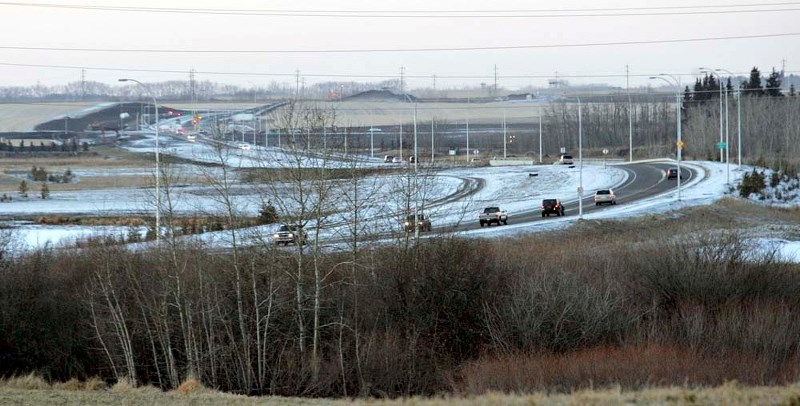What will happen to St. Albert Trail when Ray Gibbon Drive becomes a true bypass?
A study prepared last year suggests that retailers along the trail may face some challenges once the expressway is complete. But some people in the local business community feel that Ray Gibbon Drive and St. Albert Trail can both foster thriving commerce.
The future diversion of heavy truck traffic to Ray Gibbon Drive will bring new opportunities for retail-based businesses at major intersections along that road, said a retail marketing analysis report that was released to the city in December 2013.
That could lead to a loss of market share for businesses along St. Albert Trail yet allow new developments there to replace convenience-based retail stores with "higher-order destination type businesses," such as department stores and specialty stores, the study says.
"What I think will happen is that everything on Ray Gibbon Drive will become destination shopping. So people from all over the capital region will come there," said Joan Barber, manager of marketing and research with economic development. "St. Albert Trail will probably have more services for people that live in St. Albert."
Ray Gibbon Drive will differ from St. Albert Trail in that it will have only four access points to the city and will be mostly used by commuters driving to and from Edmonton, said Guy Boston, executive director with economic development.
St. Albert Trail now handles about 60,000 vehicles per day, he said. Once Ray Gibbon is complete (a six-lane expressway), it is expected to take heavy commuter and truck traffic off the trail, growing Ray Gibbon's traffic numbers from 18,000 vehicles to between 40,000 and 60,000 vehicles per day.
He cautioned that commuter numbers on the trail will likely drop for a while once Ray Gibbon Drive opens up but pick back up later.
"As our population grows and as the traffic counts on Ray Gibbon Drive grow, the population is still going to be 60,000 on St. Albert Trail," he said. "Corridors will turn back into what they were when you make service improvements."
Boston agreed with Barber that the expressway will likely be home to businesses such as an auto mall, or other developments that could be attractive to destination shoppers.
But it won't take away from business on the trail, which will continue to attract residents and people coming to shop in the city from the region, he said.
He added that developers continue to be interested in the trail and a completion date for Ray Gibbon Drive remains undefined.
The province set its funding priorities on other expressways first – such as the Calgary and Edmonton ring roads, he said. The build-out of Ray Gibbon Drive may be anywhere between five to 20 years in the future, he said.
"The time frame is so long and right now there are ample opportunities on St. Albert Trail. We see that with Costco going in there, the Erin Ridge shopping centre, the GoodLife at 525 St. Albert Trail," he said.
Unpredictable
The CEO of the local chamber of commerce agreed that it's difficult to predict what the city's commercial and non-residential build-out will look like by the time Ray Gibbon Drive is complete. That makes it difficult to predict future developments in the area, she said.
Nonetheless, Lynda Moffat said fewer trucks on the trail will benefit businesses there as heavy traffic more often than not hinders people from shopping.
"So if you can slow down the traffic and certainly get all that heavy truck traffic rerouted around, it is often more suited to people who want to come shop on the trail," she said.
In St. Albert's Riel Business Park, the jury is also still out whether diverting traffic to Ray Gibbon Drive will benefit businesses or not, said Mike Howes.
The vice-chair of the Riel Business Park Association said businesses in St. Albert are certainly excited to get the commercial traffic and semi-trailers off St. Albert Trail. They rarely stop for shopping in the city anyway, he said.
Whether or not Riel will see an increase in customers depends less on traffic counts and more on development, he said, referring to land that has stood vacant for years in the southwest of the city and along Ray Gibbon Drive.
"We've been hopeful for (development) for four or five years. Not sure if it's just the economy taking a south turn there," he said. "Obviously we think location, location, location, and the better access from the north will certainly help Riel Industrial Park."
Boston said he's optimistic that development in South Riel and other parts of the city will move ahead thanks to the city's future growth strategies.
The combination of population growth and the build-out of the regional road network will definitely aid in bringing new customers and developments to the city, he said.




